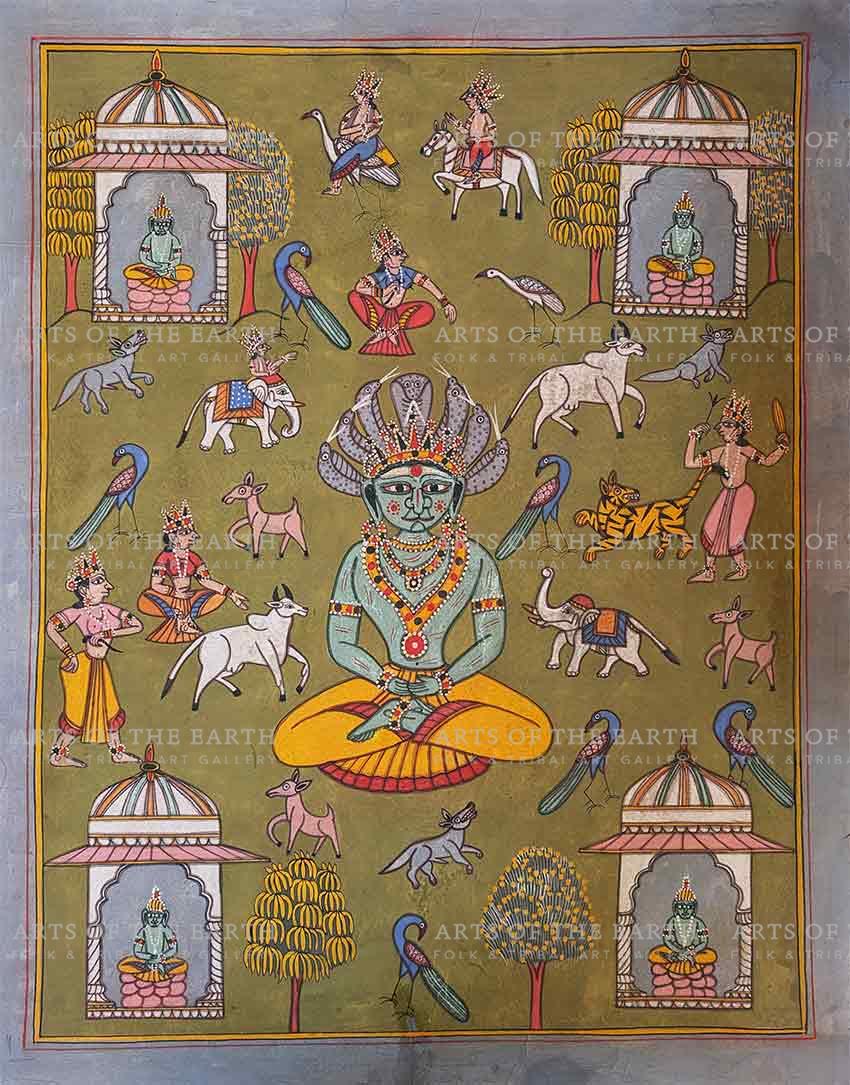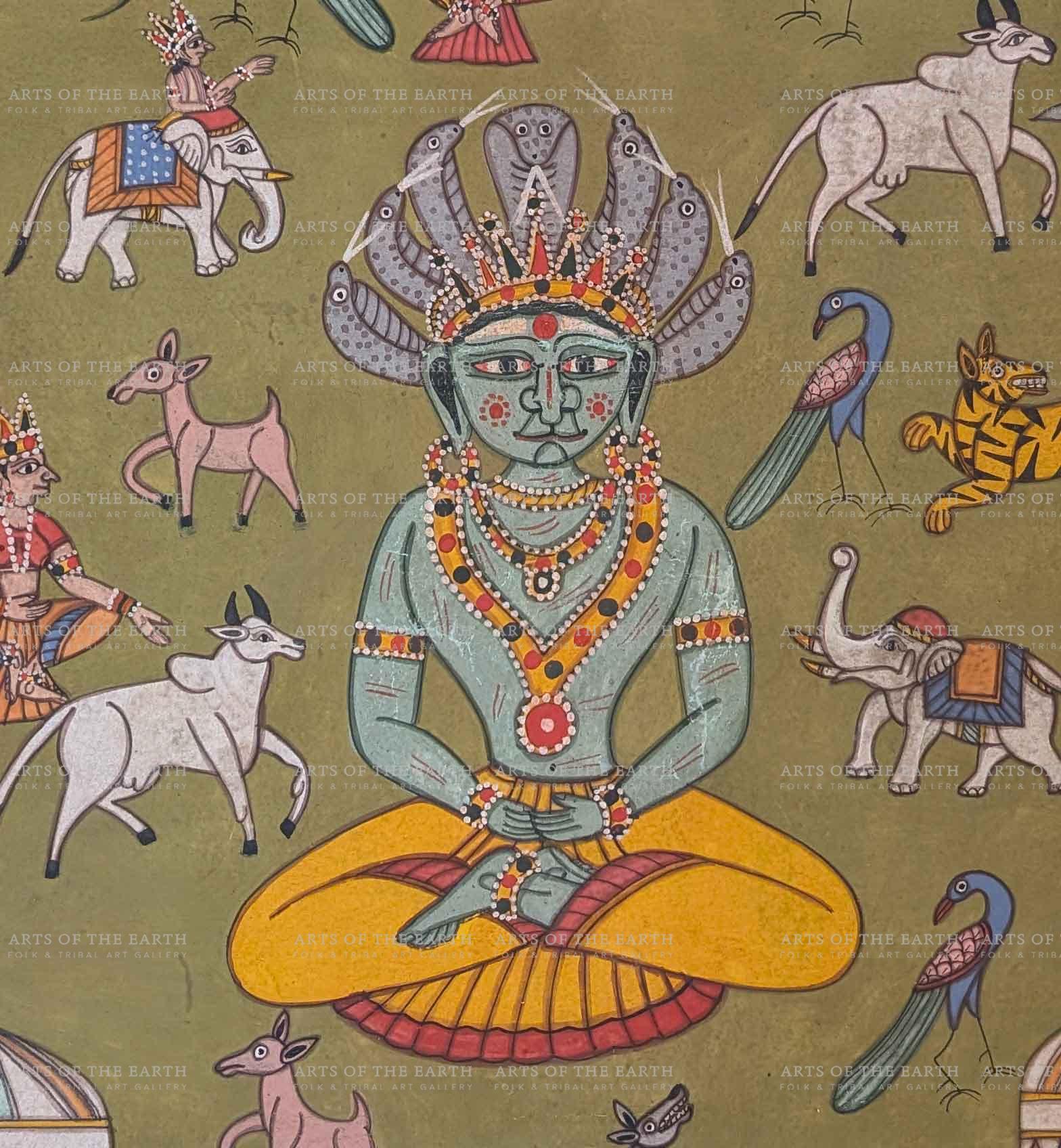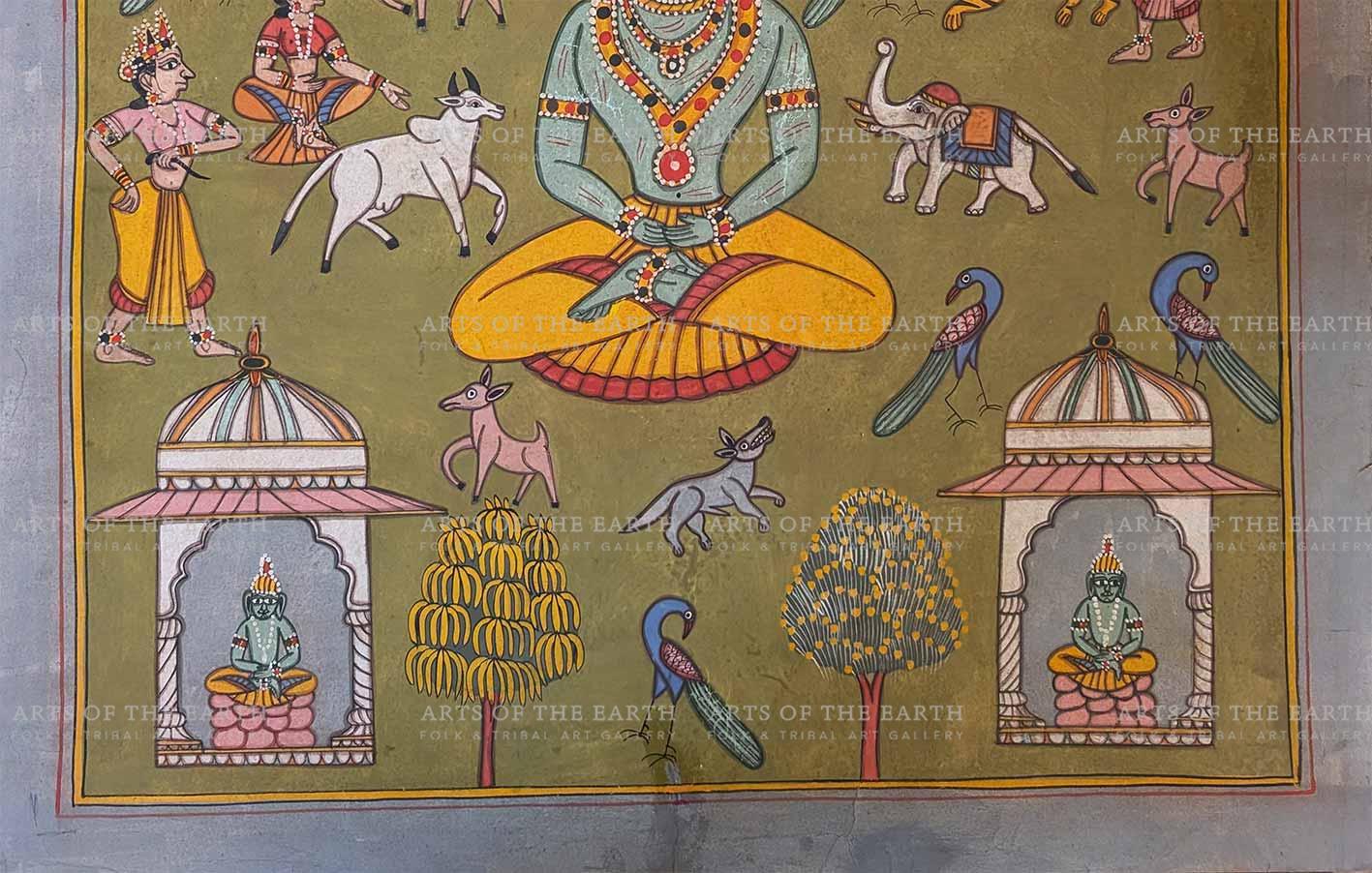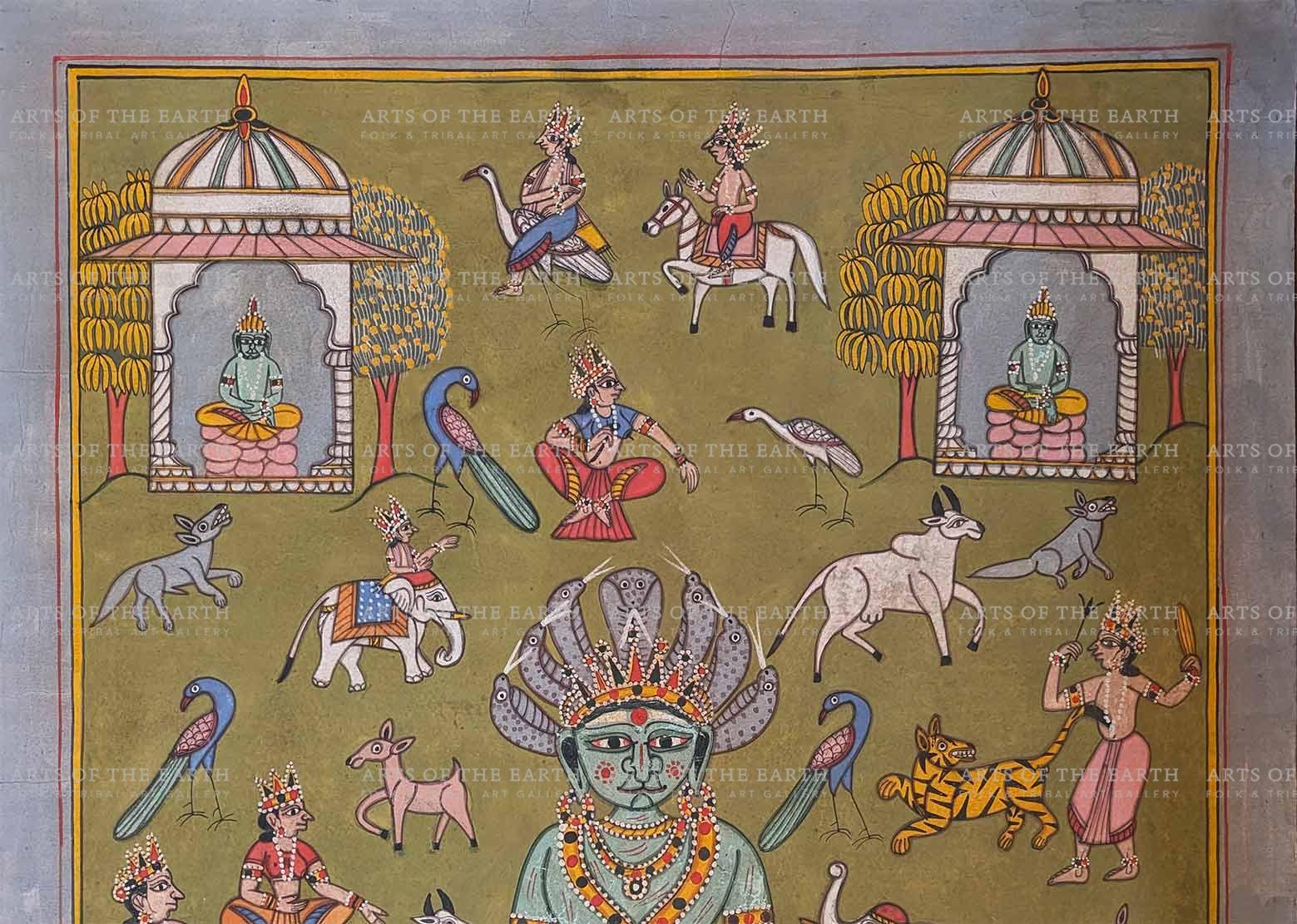




| Code | PICH84 |
| Artist Name | Unknown Pichwai Artist |
For shipping with in India and out of India, the rates as per courier company charges will apply.
| Medium: | Poster color on paper |
| Size: | 28X20 Inch |
| Location: | Delhi |
Parshvanatha, the 23rd Tirthankara (“Ford-maker,” i.e., saviour) of the present age, according to Jainism, a religion of India. This work is at least 25 years old.
The main symbol of Parshvanatha, the 23rd Tirthankara of Jainism, is the snake:
Parshvanatha is closely associated with serpents and is often depicted in sculptures and paintings with a canopy of snake hoods over his head. Legends say that his mother dreamed of a black serpent slithering past her before he was born. In the Jain scripture Kalpa-sutra, Parshvanatha is said to have saved a serpent from being burnt alive in a fire, and the snake later helped him.
Other symbols of Parshvanatha include the chaitya tree-dhava, the Yaksha-Matang, and the Yakshani-Kushmadi.
Parshvanatha established the “fourfold restraint,” which are four vows that his followers took: not to take life, steal, lie, or own property. These vows later became the five “great vows” of Jain ascetics when Mahavira added the vow of celibacy.
Temples dedicated to Parshvanatha can be found across India and other regions with Jain communities.
Parshvanatha, the 23rd Tirthankara of Jainism, is often depicted in sculptures and paintings with *various animals* around him. These animals symbolise harmony, protection, and his connection with nature. Common animals seen in his depictions include:
1. Snake: Parshvanath's primary symbol is the serpent, typically shown as a canopy of snake hoods over his head. This highlights his association with the legend of saving a snake and the serpent’s later protection of him.
2. Elephant: Elephants are often seen in depictions of Parshvanatha and symbolise strength, prosperity, and protection. They represent purity and are revered in Jain traditions.
3. Cow: The cow symbolises non-violence (Ahimsa), one of the central tenets of Jainism. Parshvanatha’s teachings emphasised the protection of all living beings, and the cow embodies gentleness and nurturing.
4. Tiger: Tigers represent control over desires and inner strength. They emphasise the power of Parshvanatha’s spiritual practice and his ability to overcome worldly temptations.
5. Peacock: Peacocks often appear in Jain art and are associated with beauty, purity, and spiritual awakening. Their presence highlights the harmony between all forms of life.
These animals surrounding Parshvanatha reflect his commitment to Ahimsa (non-violence) and his respect for all living beings. They also symbolise unity and peaceful coexistence of creatures in nature under his guidance and teachings. This imagery serves as a reminder of Jain values and Parshvanatha’s significant role in promoting compassion and harmony in the natural world.
For shipping with in India and out of India, the rates as per courier company charges will apply.
 This artwork is accompanied by an Authenticity Certificate.
This artwork is accompanied by an Authenticity Certificate.
